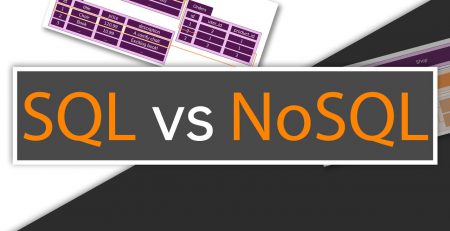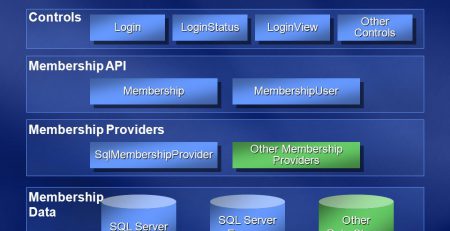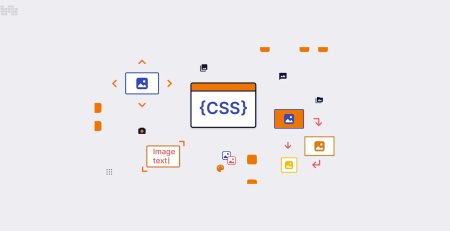Ruby on Rails: Your Gateway to Seamless Web Development with Postgres on Supabase
Table of Contents
Introduction
In this blog post, we’ll embark on a journey through the dynamic realms of web development, using the powerful combination of Ruby on Rails and Postgres on Supabase. Get ready to unlock the potential of seamless and efficient web applications as we delve into the essential steps and tips for harnessing the full capabilities of these technologies.
Introduction to Ruby on Rails
The dynamic and attractive web application framework Ruby on Rails, also referred to as just Rails, is created in the Ruby programming language. With its foundation in the ideas of “Convention over Configuration” and “Don’t Repeat Yourself” (DRY), Rails was created with the goal of simplifying, expediting, and enhancing the pleasure of online development. To get you started, we’ll go over the essential ideas of Rails in this introduction along with some code samples.
1. Installation and Setup:
Let’s begin by installing Rails. Open your terminal and run:
gem install rails
After the installation, create a new Rails application:
rails new my_first_app
Navigate to the newly created app:
cd my_first_app
2. Creating Your First Controller and View:
Rails follows the Model-View-Controller (MVC) architectural pattern. Let’s generate a controller:
rails generate controller Welcome index
This command creates a WelcomeController with an index action. Now, open app/controllers/welcome_controller.rb and add:
class WelcomeController < ApplicationController
def index
@greeting = "Welcome to Ruby on Rails!"
end
endCreate a corresponding view in app/views/welcome/index.html.erb:
<h1><%= @greeting %></h1>
3. Defining Routes:
To make our application accessible, we need to define routes. Open config/routes.rb and add:
Rails.application.routes.draw do get 'welcome/index' root 'welcome#index' end
This sets the root of our application to the index action of the WelcomeController.
4. Starting the Server:
Launch the Rails server:
rails server
Visit http://localhost:3000 in your browser, and you should see your first Rails application displaying the welcome message.
5. Models and Databases:
Rails simplifies database interaction. Let’s create a simple model. Generate a model:
rails generate model Post title:string body:text
Run migrations to apply changes to the database:
rails db:migrate
Now, you can interact with the Post model in your Rails console:
rails console
# Create a new post Post.create(title: "Hello Rails", body: "This is my first post!") # Retrieve all posts Post.all
6. Conclusion:
When it comes to Ruby on Rails, this is only the beginning. You’ll find strong capabilities for managing validations, authentication, and more as you investigate deeper. With Rails, developers can easily create scalable and reliable online apps. Greetings from the Ruby on Rails world, where creating beautiful experiences rather than just writing code is the focus.
In subsequent tutorials, we’ll delve deeper into various aspects of Rails, so stay tuned! Happy coding!
Building a Solid Database Foundation with Postgres
A robust database is the backbone of any web application, and in the world of Ruby on Rails, PostgreSQL (Postgres) stands out as a powerful and reliable choice. In this guide, we’ll explore how to integrate and interact with Postgres in a Ruby on Rails application, laying the foundation for a scalable and efficient database.
1. Installation and Configuration:
First, ensure you have the pg gem in your Rails application’s Gemfile:
# Gemfile gem 'pg'
Run bundle install to install the gem.
Next, configure your database in config/database.yml:
# config/database.yml
default: &default
adapter: postgresql
encoding: unicode
pool: <%= ENV.fetch("RAILS_MAX_THREADS") { 5 } %>
username: your_postgres_username
password: your_postgres_password
host: localhost
port: 5432
development:
<<: *default
database: your_app_name_development
test:
<<: *default
database: your_app_name_test
production:
<<: *default
database: your_app_name_production
username: your_production_postgres_username
password: your_production_postgres_passwordReplace placeholders with your actual Postgres credentials.
2. Creating a Model:
Let’s create a simple model to interact with our database. Run:
rails generate model Product name:string price:decimal
This generates a migration file. Run the migration to create the products table:
rails db:migrate
3. CRUD Operations:
Perform basic CRUD (Create, Read, Update, Delete) operations with the Product model. Open the Rails console:
rails console
# Create a new product Product.create(name: "Laptop", price: 999.99) # Retrieve all products Product.all # Update a product product = Product.find_by(name: "Laptop") product.update(price: 1099.99) # Delete a product product.destroy
4. Associations:
Utilize associations to establish relationships between models. For example, let’s associate Product with Category. Modify the models:
# app/models/product.rb class Product < ApplicationRecord belongs_to :category end
# app/models/category.rb class Category < ApplicationRecord has_many :products end
Run a migration to add a category_id column to the products table:
rails generate migration AddCategoryIdToProducts category:references rails db:migrate
Now, you can associate products with categories.
5. Querying with ActiveRecord:
Leverage ActiveRecord, Rails’ ORM, for powerful database queries:
# Find products in a specific category
laptops = Category.find_by(name: "Electronics").products
# Find cheap products
cheap_products = Product.where("price < ?", 500)6. Conclusion:
Building a solid database foundation with Postgres in Ruby on Rails is essential for creating scalable and efficient web applications. From installation to advanced querying, this guide provides a starting point for integrating and interacting with Postgres in your Rails projects. As you delve deeper into your application’s needs, explore Postgres features like indexes, constraints, and advanced queries to optimize performance. Happy coding!
Supabase: A Game-Changer for Web Developers
Supabase, an open-source alternative to traditional backend services, brings a new dimension to web development. In this guide, we’ll explore the integration of Supabase with Ruby on Rails, unlocking a seamless and efficient development experience. Let’s dive in with code examples to harness the power of Supabase.
1. Getting Started with Supabase:
Begin by signing up for a Supabase account at Supabase. Once registered, create a new project and obtain your Supabase URL and API key.
2. Installing the Supabase Ruby Gem:
In your Rails application’s Gemfile, add the Supabase gem:
# Gemfile gem 'supabase-ruby'
Run bundle install to install the gem.
3. Setting Up Supabase Configuration:
Configure Supabase in your Rails application. Create an initializer file, e.g., config/initializers/supabase.rb:
# config/initializers/supabase.rb Supabase.configure do |config| config.url = 'your_supabase_url' config.api_key = 'your_supabase_api_key' end
Replace placeholders with your actual Supabase URL and API key.
4. Interacting with Supabase:
Utilize the Supabase Ruby gem to interact with your Supabase project. For example, let’s create a simple model for managing user data:
rails generate model User name:string email:string rails db:migrate
Now, in your Rails console:
rails console
# Create a new user in Supabase user = User.create(name: "John Doe", email: "john@example.com")
5. Retrieving Data from Supabase:
Retrieve data from Supabase using the Ruby gem:
# Retrieve all users from Supabase
users = Supabase.from('users').select('*').execute6. Real-Time Collaboration with Supabase:
Leverage Supabase’s real-time features for seamless collaboration. In your application, subscribe to real-time updates:
// Example using Stimulus.js
import { createChannel } from "supabase-actioncable";
const channel = createChannel("realtime:users");
channel.on("CREATE", (payload) => {
// Handle real-time creation of users
console.log("New user created:", payload);
});7. Authentication with Supabase:
Integrate Supabase for user authentication:
# In a controller
def create
user = User.find_or_create_by(email: params[:email])
if user.save
# Authenticate with Supabase
Supabase.auth.sign_up(email: user.email, password: params[:password])
render json: { message: 'User created and authenticated with Supabase' }
else
render json: { error: 'User creation failed' }, status: :unprocessable_entity
end
end8. Conclusion:
Supabase transforms the landscape of web development, offering a scalable and real-time backend solution. By seamlessly integrating Supabase with Ruby on Rails, you unlock a new level of efficiency and collaboration. Experiment with Supabase’s features, from real-time updates to authentication, and elevate your web development experience to new heights. Happy coding with Supabase!
Setting Up Your Project: A Step-by-Step Guide
Setting up a Ruby on Rails project with Postgres on Supabase is an exciting journey towards building dynamic and scalable web applications. In this step-by-step guide, we’ll walk through the process, providing code examples to ensure a smooth setup.
1. Create a New Rails Project:
Open your terminal and run the following commands to create a new Rails project:
rails new my_supabase_project cd my_supabase_project
2. Add Postgres to Your Gemfile:
Open your Gemfile and add the pg gem for Postgres:
# Gemfile gem 'pg'
Run bundle install to install the gem.
3. Configure Database.yml for Postgres:
Open config/database.yml and configure the database settings for Postgres:
# config/database.yml
default: &default
adapter: postgresql
encoding: unicode
pool: <%= ENV.fetch("RAILS_MAX_THREADS") { 5 } %>
username: your_postgres_username
password: your_postgres_password
host: localhost
port: 5432
development:
<<: *default
database: my_supabase_project_development
test:
<<: *default
database: my_supabase_project_test
production:
<<: *default
database: my_supabase_project_production
username: your_production_postgres_username
password: your_production_postgres_passwordReplace placeholders with your actual Postgres credentials.
4. Create a Welcome Controller:
Generate a simple controller to test the setup:
rails generate controller Welcome index
5. Configure Routes:
Open config/routes.rb and set the root route to the WelcomeController:
# config/routes.rb Rails.application.routes.draw do get 'welcome/index' root 'welcome#index' end
6. Run Migrations:
Run the following commands to create and migrate the database:
rails db:create rails db:migrate
7. Install Supabase Gem:
Open your Gemfile and add the supabase-ruby gem:
# Gemfile gem 'supabase-ruby'
Run bundle install to install the gem.
8. Configure Supabase:
Create an initializer for Supabase in config/initializers/supabase.rb:
# config/initializers/supabase.rb Supabase.configure do |config| config.url = 'your_supabase_url' config.api_key = 'your_supabase_api_key' end
Replace placeholders with your actual Supabase URL and API key.
9. Test Supabase Integration:
In your Rails console, try creating a simple record and fetching it from Supabase:
rails console
# Example using a User model
user = User.create(name: "John Doe", email: "john@example.com")
# Retrieve all users from Supabase
Supabase.from('users').select('*').execute10. Conclusion:
Congratulations! You’ve successfully set up your Ruby on Rails project with Postgres on Supabase. This foundation will empower you to build dynamic and collaborative web applications. As you delve deeper into your project, explore the rich features of Rails, Postgres, and Supabase to unlock endless possibilities. Happy coding!
Mastering CRUD Operations
CRUD (Create, Read, Update, Delete) operations form the backbone of any web application. In this guide, we’ll delve into mastering CRUD operations in Ruby on Rails, utilizing Postgres as the database and integrating seamlessly with Supabase. Let’s explore each operation with code examples for a comprehensive understanding.
1. Creating Records (Create):
To create records in your Rails application and persist them to Supabase, let’s use a simple model, for example, Task. First, generate the model:
rails generate model Task title:string description:text rails db:migrate
Now, in your Rails console:
rails console
# Create a new task
task = Task.create(title: "Complete Tutorial", description: "Mastering CRUD with Rails and Supabase")
# Verify the record is persisted to Supabase
Supabase.from('tasks').select('*').execute2. Reading Records (Read):
Retrieve and read records from Supabase using ActiveRecord:
# Retrieve all tasks from Supabase
tasks = Supabase.from('tasks').select('*').execute
puts tasks# Find a specific task by ID task_id = 1 task = Task.find(task_id) puts task
3. Updating Records (Update):
Update records in both the Rails application and Supabase:
# Find a task by ID and update
task = Task.find(task_id)
task.update(description: "Updated tutorial with advanced examples")
# Verify the update in Supabase
Supabase.from('tasks').select('*').execute4. Deleting Records (Delete):
Delete records in both the Rails application and Supabase:
# Find a task by ID and delete
task = Task.find(task_id)
task.destroy
# Verify the deletion in Supabase
Supabase.from('tasks').select('*').execute5. Conclusion:
Mastering CRUD operations in Ruby on Rails with Postgres on Supabase provides you with the foundation to build robust and dynamic web applications. As you explore further, consider incorporating validations, associations, and real-time updates to enhance the functionality of your application. With the seamless integration of Rails, Postgres, and Supabase, you’re equipped to handle data operations efficiently. Happy coding!
Advanced Tips and Best Practices
As you progress in your web development journey, mastering advanced tips and best practices becomes crucial for building scalable and maintainable applications. In this guide, we’ll explore advanced techniques and best practices in Ruby on Rails, leveraging Postgres as the database and integrating seamlessly with Supabase. Let’s dive into the code examples:
1. Optimizing Database Queries:
Utilize ActiveRecord’s advanced querying methods to optimize database queries:
# Fetch tasks with specific conditions
tasks = Task.where('priority > ?', 3).order(created_at: :desc).limit(10)
puts tasks2. Handling Database Transactions:
Ensure data consistency with database transactions:
# Example of a transaction Task.transaction do task1 = Task.create(title: "Task 1") task2 = Task.create(title: "Task 2") # Additional operations... end
3. Implementing Indexing in Postgres:
Improve query performance by adding indexes to frequently queried columns:
# Add an index to the 'title' column in the tasks table
class AddIndexToTasksTitle < ActiveRecord::Migration[6.0]
def change
add_index :tasks, :title
end
end4. Utilizing Database Views:
Optimize complex queries with database views:
# Create a database view for a complex query
class CompletedTasksView < ActiveRecord::Migration[6.0]
def up
execute <<-SQL
CREATE VIEW completed_tasks AS
SELECT * FROM tasks WHERE completed = true;
SQL
end
def down
execute 'DROP VIEW IF EXISTS completed_tasks;'
end
end5. Handling Large Datasets with Pagination:
Implement paginated queries to handle large datasets efficiently:
# Paginate tasks with 10 records per page tasks = Task.paginate(page: params[:page], per_page: 10) puts tasks
6. Securing Your Application:
Implement security best practices, such as strong parameters and authentication:
# Strong parameters for task creation def task_params params.require(:task).permit(:title, :description, :priority) end # Example of user authentication with Devise before_action :authenticate_user!
7. Caching for Performance:
Leverage caching to improve application performance:
# Cache a complex query result for 1 hour
tasks = Rails.cache.fetch('tasks:high_priority', expires_in: 1.hour) do
Task.where('priority > ?', 3)
end
puts tasks8. Handling Background Jobs:
Offload time-consuming tasks to background jobs for improved responsiveness:
# Example using Sidekiq for background processing
class TaskMailerWorker
include Sidekiq::Worker
def perform(task_id)
task = Task.find(task_id)
# Send email logic...
end
end9. Regular Database Maintenance:
Schedule regular database maintenance tasks, such as vacuuming:
# Schedule a daily database vacuum every 1.day, at: '4:30 am' do rake 'db:maintenance:vacuum' end
10. Conclusion:
These advanced tips and best practices provide a solid foundation for optimizing, securing, and maintaining your Ruby on Rails application with Postgres on Supabase. Continuously explore and adapt these techniques to meet the evolving needs of your projects. With these practices, you’ll be well-equipped to build high-performance, secure, and scalable web applications. Happy coding!
Real-world Examples and Case Studies
Real-World Examples and Case Studies: Mastering Ruby on Rails and Postgres on Supabase
Learning from real-world examples and case studies can provide valuable insights into the practical application of Ruby on Rails, Postgres, and Supabase. Let’s explore a couple of scenarios where these technologies shine in real-world web development.
Example 1: E-commerce Platform
Problem Statement:
Build a robust e-commerce platform that handles a large inventory, real-time updates, and seamless user experiences.
Technologies Used:
- Ruby on Rails for backend development.
- Postgres as the relational database to store product information, user data, and order details.
- Supabase for real-time collaboration and notifications.
Implementation:
- Use Rails to create models for products, users, and orders, establishing relationships between them.
- Leverage Postgres features for efficient product categorization, inventory management, and order tracking.
- Utilize Supabase real-time features to update users on product availability, order status, and promotions in real-time.
Example 2: Collaborative Project Management Tool
Problem Statement:
Develop a collaborative project management tool where teams can collaborate on tasks, share updates, and track progress.
Technologies Used:
- Ruby on Rails for backend logic and API endpoints.
- Postgres as the database to store project details, tasks, and user information.
- Supabase for real-time updates, comments, and notifications.
Implementation:
- Design Rails models for projects, tasks, and users, ensuring efficient associations.
- Implement real-time collaboration using Supabase for instant task updates, comments, and notifications.
- Leverage Postgres features for complex queries, such as filtering tasks based on priority, due dates, and completion status.
Case Study: Social Networking Platform
Problem Statement:
Create a scalable social networking platform with features like user profiles, posts, comments, and real-time interactions.
Technologies Used:
- Ruby on Rails for backend API development.
- Postgres for storing user data, posts, and comments.
- Supabase for real-time updates, chat features, and notifications.
Implementation:
- Design Rails models for users, posts, and comments, establishing relationships between them.
- Utilize Postgres for efficiently querying and displaying user-specific timelines, post feeds, and comment threads.
- Implement real-time features with Supabase for instant notifications on new posts, comments, and chat messages.
Empirical instances showcase the adaptability and potency of Ruby on Rails, Postgres, and Supabase in resolving intricate problems. Developers can construct strong and dynamic online applications with ease thanks to the seamless integration of these technologies, whether they are developing social networking sites, e-commerce platforms, or collaboration tools. Developers can have a better grasp of how to use these technologies to satisfy project needs by studying case studies and real-world implementations.
Troubleshooting and Debugging
Troubleshooting and Debugging in Ruby on Rails with Postgres on Supabase
Effective troubleshooting and debugging are essential skills for any web developer. In this guide, we’ll explore common issues you might encounter while working with Ruby on Rails, Postgres, and Supabase, and provide tips on how to diagnose and resolve them.
1. Database Connection Issues:
Problem: Unable to establish a connection to the Postgres database or Supabase.
Possible Solutions:
- Check the
database.ymlfile for correct Postgres credentials. - Verify network connectivity to the Postgres server or Supabase.
- Ensure Postgres or Supabase server is running.
- Check for firewall restrictions that might block the database connection.
2. Schema Mismatch:
Problem: Changes to the database schema are not reflected in the application.
Possible Solutions:
- Run
rails db:migrateto apply pending migrations. - Check the status of migrations with
rails db:migrate:status. - Ensure the
schema.rbfile is up to date by runningrails db:schema:dump.
3. Supabase API Key Issues:
Problem: Authentication issues with Supabase API key.
Possible Solutions:
- Verify that the Supabase API key is correctly configured in the initializer.
- Check if the Supabase project is active and accessible.
- Confirm that the Supabase API key has the necessary permissions.
4. Real-time Update Problems:
Problem: Real-time updates from Supabase are not reflected in the application.
Possible Solutions:
- Check the subscription setup for real-time features.
- Ensure that the Supabase table has the appropriate triggers configured.
- Verify that the Supabase API key used for subscriptions is valid.
5. Performance Bottlenecks:
Problem: Slow application performance.
Possible Solutions:
- Use Rails logging and profiling tools to identify performance bottlenecks.
- Check the execution plans for slow queries in Postgres.
- Optimize database queries by adding indexes where necessary.
- Consider caching strategies for frequently accessed data.
6. Gem Version Compatibility:
Problem: Incompatibility issues with gem versions.
Possible Solutions:
- Check the gem documentation for compatibility with Rails and other gems.
- Use version constraints in the
Gemfileto ensure compatibility. - Update gems to the latest versions and check release notes for potential issues.
7. SSL Certificate Errors:
Problem: SSL certificate-related errors when connecting to Supabase.
Possible Solutions:
- Ensure that your Ruby version and OpenSSL are up to date.
- Configure Supabase to use the correct SSL certificate authority.
- Check if your operating system’s certificate store is updated.
8. Debugging Techniques:
Tips for Effective Debugging:
- Use
puts,logger, orbinding.prystatements to inspect variables and code flow. - Leverage Rails’ built-in debugging tools, like
rails consoleandbyebug. - Check Rails logs (
log/development.logorlog/production.log) for error messages. - Utilize browser developer tools for frontend debugging in JavaScript.
By employing these troubleshooting and debugging techniques, you can navigate challenges efficiently and ensure the smooth operation of your Ruby on Rails application with Postgres on Supabase. Remember to document your debugging process to aid future development and collaboration.
Community and Resources
Community and Resources for Ruby on Rails and Postgres on Supabase
Building a strong knowledge base and community connection is essential for continuous learning and problem-solving. Here’s a guide to community engagement and valuable resources for mastering Ruby on Rails, Postgres, and Supabase:
1. Community Forums:
- Ruby on Rails Forum: Engage with the Ruby on Rails community to ask questions, share experiences, and learn from fellow developers.
- Supabase Community: Join discussions on Supabase-related topics, share your projects, and seek assistance from the Supabase community.
2. Online Platforms:
- Stack Overflow: Explore Ruby on Rails and Supabase tags on Stack Overflow to find answers to specific questions and participate in discussions.
- GitHub: Contribute to open-source projects, report issues, and collaborate with the community on GitHub repositories related to Ruby on Rails and Supabase.
3. Documentation:
- Ruby on Rails Guides: The official Rails guides provide in-depth documentation on various aspects of Rails development, from routing to active record.
- PostgreSQL Documentation: Refer to the comprehensive PostgreSQL documentation for detailed information on database management and SQL queries.
- Supabase Documentation: Explore the Supabase documentation for guides, API references, and tutorials on utilizing Supabase features.
4. Online Courses:
- Codecademy – Learn Ruby on Rails: Codecademy offers an interactive course to learn Ruby on Rails, suitable for beginners and those looking to deepen their knowledge.
- Udemy – The Complete Ruby on Rails Developer Course: This Udemy course covers both Ruby on Rails and provides hands-on projects to enhance your skills.
5. Blogs and Newsletters:
- Ruby on Rails Blog: Stay updated on the latest news, releases, and announcements from the official Ruby on Rails blog.
- Supabase Blog: Explore the Supabase blog for articles, case studies, and tutorials on using Supabase in real-world applications.
6. Meetups and Events:
- Meetup: Join local or virtual meetups related to Ruby on Rails and database technologies to network with professionals and attend informative sessions.
- RailsConf: Attend RailsConf, the official conference for the Ruby on Rails community, to learn from experts, participate in workshops, and connect with other developers.
7. Social Media:
- Twitter: Follow relevant hashtags like #RubyOnRails and #Supabase on Twitter to stay informed about the latest trends, discussions, and resources.
Building a presence in these communities, staying active in forums, and regularly exploring new resources will contribute significantly to your growth as a Ruby on Rails and Supabase developer. Remember to give back to the community by sharing your knowledge and experiences. Happy coding!
Next Steps: Beyond the Basics
Congratulations on mastering the basics of Ruby on Rails and Postgres on Supabase! Now, let’s explore the next steps to deepen your expertise and take your web development skills to the next level:
1. Advanced Rails Features:
- Action Cable: Learn how to implement real-time features using Action Cable in Rails. Explore web sockets and create interactive, real-time applications.
- ActiveJob: Dive into background job processing using ActiveJob. Integrate with tools like Sidekiq or Delayed Job to handle time-consuming tasks efficiently.
- Rails API: Extend your knowledge by building a robust API with Rails. Understand how to create a backend API to support mobile applications or external services.
2. Optimizing Database Performance:
- Database Indexing: Master the art of indexing in Postgres to improve query performance. Learn when and how to use indexes for various types of queries.
- Database Sharding: Explore advanced database sharding techniques to horizontally scale your application’s database and handle increased loads.
- Database Replication: Understand Postgres replication to create high availability setups and distribute read queries across multiple database servers.
3. Supabase Advanced Features:
- Supabase Authentication: Implement user authentication with Supabase to secure your application. Explore various authentication methods and integrate them into your Rails app.
- Supabase Triggers: Learn how to use Supabase triggers for serverless functions and automate complex workflows in response to changes in your database.
- Supabase Storage: Explore Supabase Storage to efficiently manage and serve media files like images, videos, and documents in your application.
4. Security Best Practices:
- Secure Coding Practices: Brush up on secure coding practices in Rails. Understand and implement measures to protect your application from common security vulnerabilities.
- SSL/TLS Implementation: Ensure secure communication by implementing SSL/TLS in your application. Understand the importance of securing data in transit.
5. Frontend Frameworks:
- React or Vue Integration: Consider integrating a modern JavaScript framework like React or Vue.js with Rails to build dynamic and interactive user interfaces.
- StimulusJS: Learn about StimulusJS, a lightweight JavaScript framework by Basecamp, to add interactivity to your Rails views.
6. Testing and Test-Driven Development (TDD):
- RSpec: Dive into RSpec for testing in Rails. Explore the world of behavior-driven development (BDD) and write comprehensive tests for your application.
- FactoryBot: Master FactoryBot for creating test data. Understand how to create realistic and maintainable factories for your models.
7. DevOps and Deployment:
- Docker and Kubernetes: Explore containerization with Docker and orchestration with Kubernetes for efficient deployment and scaling of your Rails application.
- Continuous Integration/Continuous Deployment (CI/CD): Implement CI/CD pipelines to automate testing and deployment processes, ensuring a streamlined development workflow.
8. Contribute to Open Source:
- GitHub Contributions: Contribute to open-source projects on GitHub. Participate in discussions, submit pull requests, and collaborate with the wider developer community.
- Open Source Projects: Start your own open-source project or contribute to existing ones. Share your knowledge and code with the community.
9. Stay Updated:
- Subscribe to Newsletters: Stay informed about the latest updates in Ruby on Rails, Postgres, and Supabase by subscribing to newsletters and following key influencers in the community.
- Attend Conferences and Meetups: Attend virtual or in-person conferences and meetups to network with professionals, learn about new technologies, and gain insights into industry best practices.
Embrace these next steps with curiosity and enthusiasm. Whether you choose to specialize in a particular area, explore new technologies, or contribute to open source, continuous learning and hands-on experience will be your key companions on this exciting journey. Happy coding!












Leave a Reply